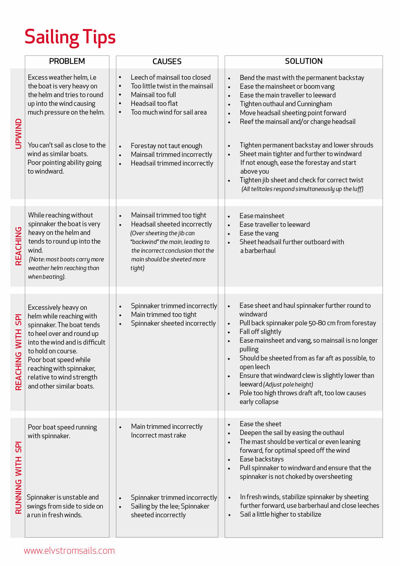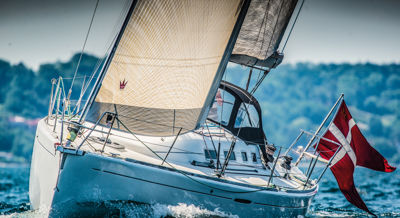
How is your trim? Well-trimmed sails are essential for the performance of your boat, and in many cases, small changes will make all the difference.
Here is our quick guide with tips that take you from problem to solution.

Basic tips for furling sails
In-mast furling main sail
A correct rig-tuning is essential for the furling sail to work properly. If the mast has too much pre-bend it will be difficult to furl the sail. A rule of thumb is to make sure that the furling mast has a pre-bend of max. 0.25 % of the luff length (P- measurement). Example: A sail with a 10 meter luff should have a max. pre-bend of 2,5 cm (measured with no back stay tension).
The extrusion in the furling mast must be tensioned according to the guide given by the mast producer. (Neither to little nor too much.)
The optimal wind angle when furling in and/or out is 30-70 ° with a reasonable tension on the out-hall as well as on the main sheet. Remember - no backstay.
In-boom furling main
The boom angle is the most important parameter for a smooth furling in a Furling-boom. If the sail rolls too much forward then the boom is too low and must be raised. And if the sail rolls too much aft then the boom must be lowered.
When furling make sure there is a little tension on the halyard should in order to furl the sail compact.
The optimal wind angle is 0-40°

Furling head sails, Furlstrøm and Code Zero
Furling head sail
The head stay tension has impact on how the sail furls. By a very straight head stay the sail is less cambered whereby the furling is smoother. Do not hold too much back in the sheet when furling (ease plenty, without having a fluttering sail).
The optimal wind angle to furl is 120-160°, if possible.
Furling Top-down (Furlstrøm XL)
When furling a sail fitted with an Anti-torsion cable, the cable must be properly tensioned. Always furl in, in the same direction.
The optimal wind angle to furl is 130-170°, if possible, where the sheet is eased successively without having the sail to flutter. Sailing with this sail in courses in 120-170° barberhaul is recommended.
Furling Bottom-up (Code 0, Furlstrøm)
When furling a sail fitted with an Anti-torsion cable then the cable must be properly tensioned. Always furl in, in the same direction.
The optimal wind angle to furl is 110-160°, if possible, where the sheet is eased successively without having the sail to flutter. Barberhaul is recommended for optimal trimming.